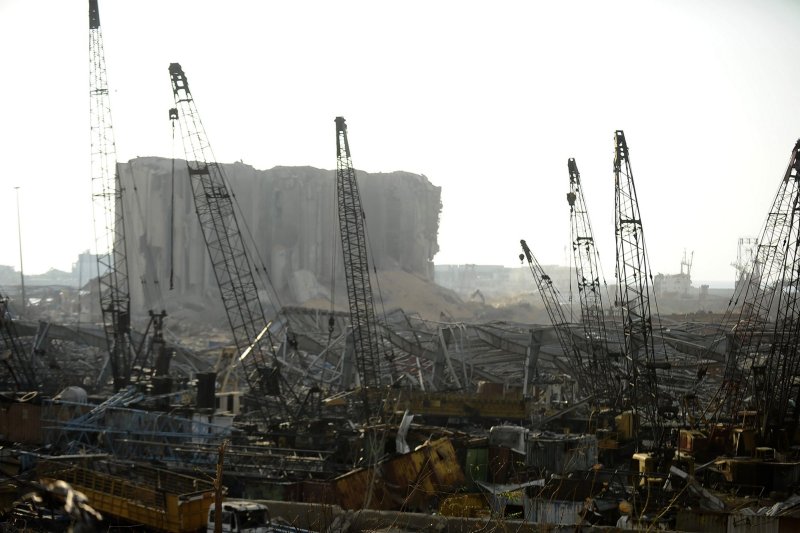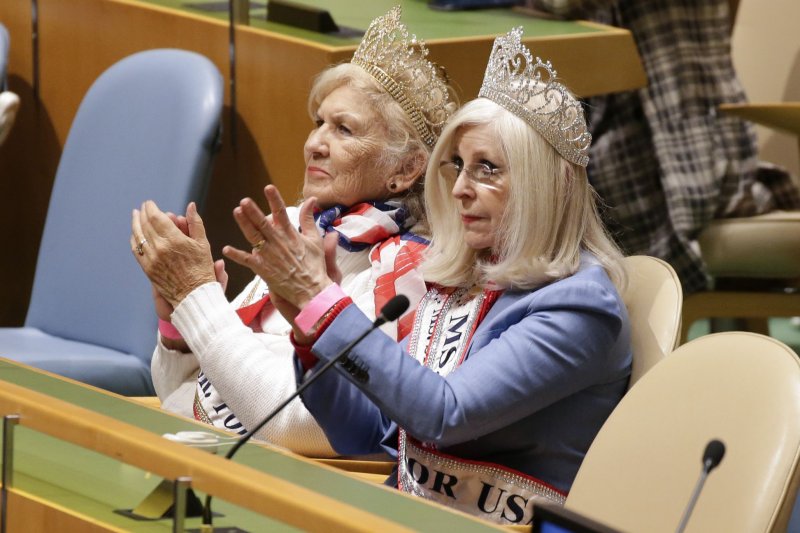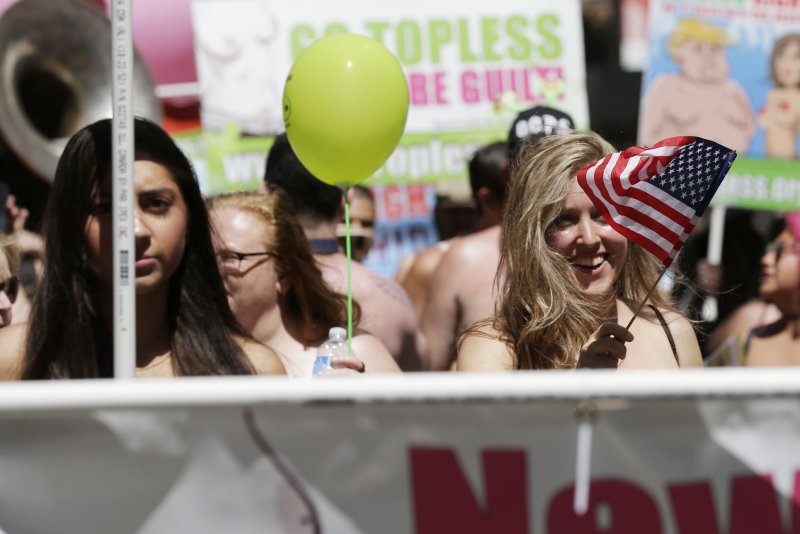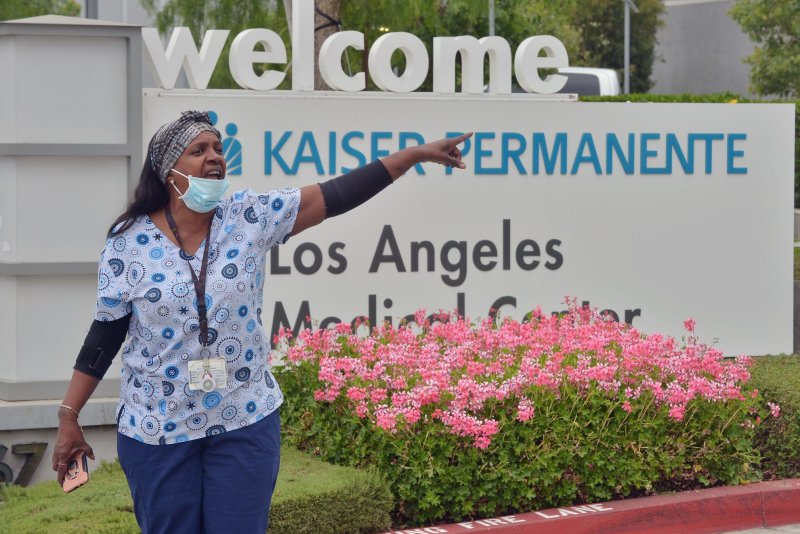
Debris is seen at the port of Beirut on Wednesday, more than a week after two explosions and fire heavily damaged a section of the downtown area of Beirut, Lebanon. Photo by Mustafa Jamaleddine/UPI | License Photo
Aug. 13 (UPI) -- The Lebanese Parliament declared a state of emergency Thursday, more than a week after two explosions rocked the port of Beirut and killed more than 200 people.
The emergency is a response to a large outpouring of opposition in Beirut for several days, which have demanded accountability for the Aug. 4 disaster and factored into the resignation of several top government officials, including Prime Minister Hassan Diab.
Under the emergency declaration, the Lebanese army has power to prosecute activists in military courts for "crimes related to breach of security." The law can also bar threatening gatherings, close assembly sites, establish curfews, censor media, enter homes and deport suspects.
Parliament speaker Nabih Berri said the army has not suppressed television channels or taken other steps some had feared with the emergency declaration.
Critics have said the state of emergency isn't needed and some suspect it's a ruse for the government to increase its power.
Eight members of parliament have resigned since the explosions and elections to replace them are expected within months.









